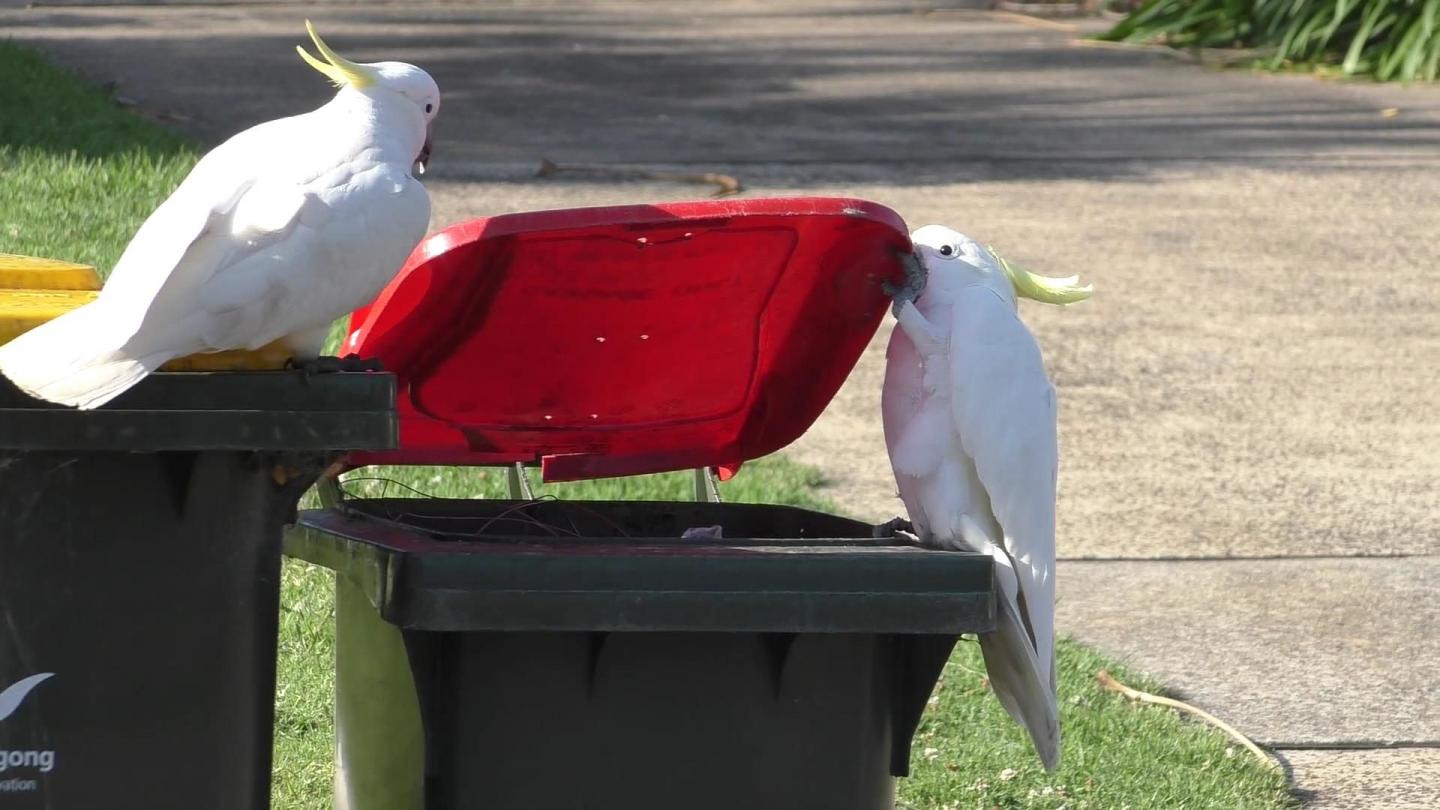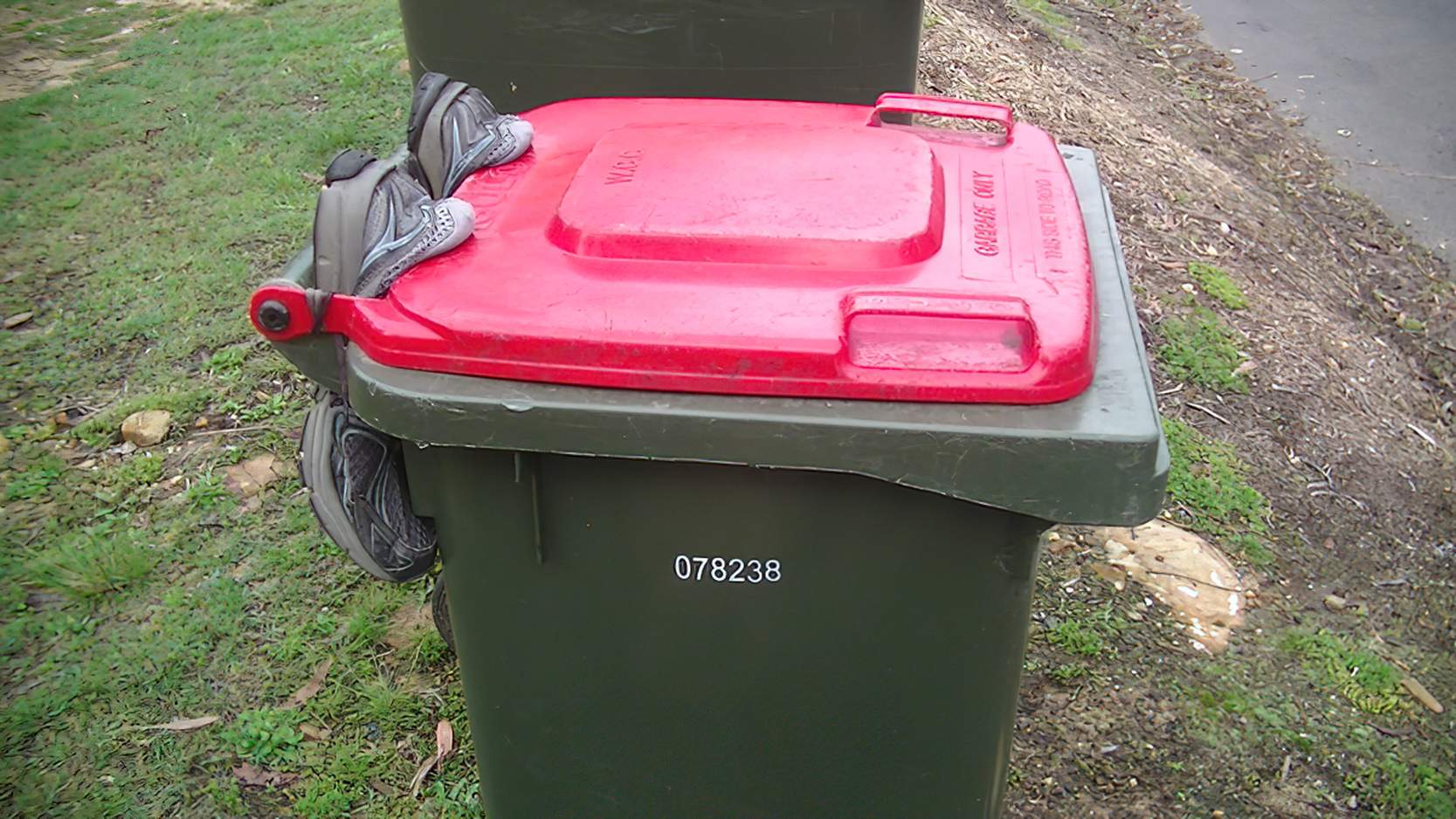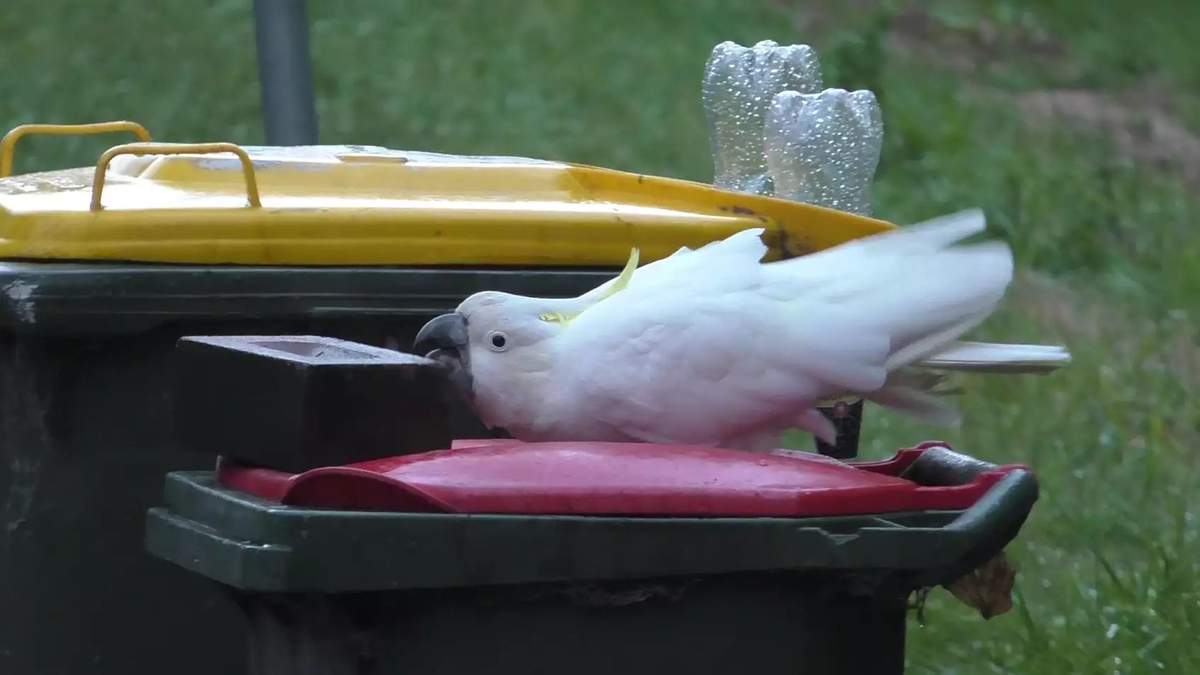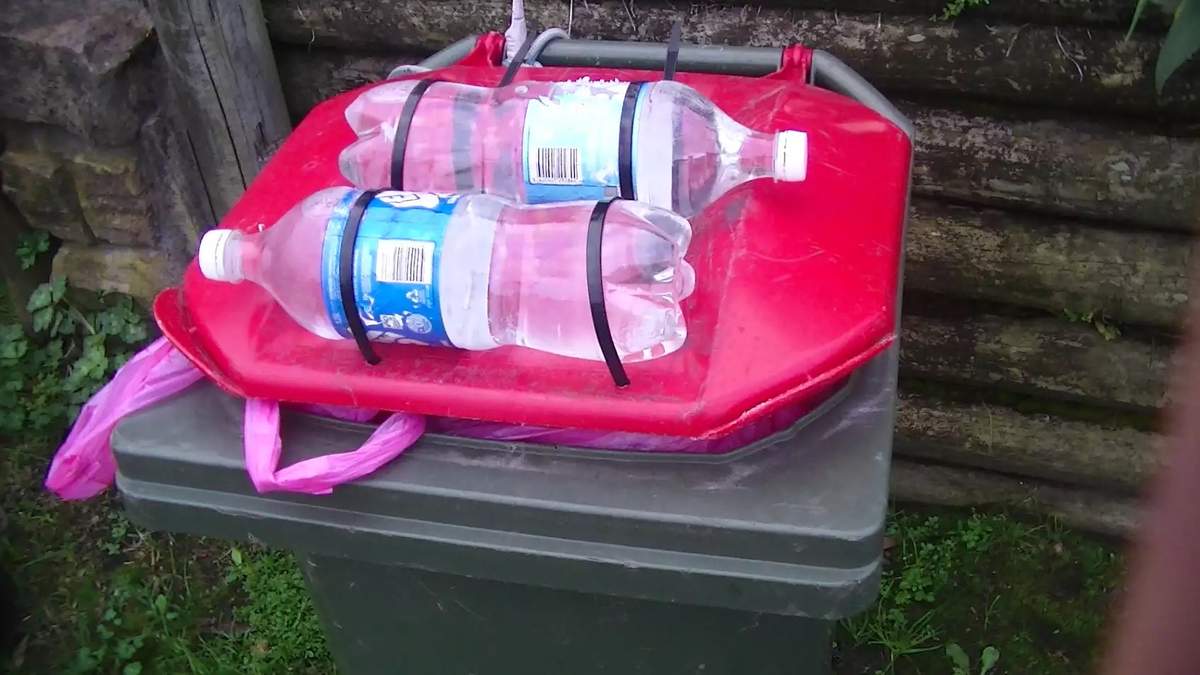Sydney, Australia —(Map)
Scientists report that people in Sydney, Australia are in a battle with cockatoos. The birds have learned to open the lids on trash bins, and people are figuring out new ways to keep the lids closed. But the clever birds are quickly discovering new tricks.
Sulphur-crested cockatoos are large, white birds in the parrot family. They’re common in eastern Australia, where they normally live in wooded areas. But as forests have been cut down, cockatoos have gotten used to living near people. Cockatoos are very clever.
Last year, scientists at the Max Planck Institute reported that cockatoos had learned how to open the lids on trash bins. That’s not an easy job. The cockatoos must lift the heavy lid with their beaks and then walk along, pushing the lid up until it falls over.

(Source: Barbara Klump/Max Planck Institute of Animal Behavior.)
Cockatoos open the lids to find food scraps. But they can also make a big mess, which upsets the people who own the trash bins.
What really interested the scientists was that the birds were teaching other cockatoos how to do the same thing. When scientists first began studying the cockatoos in 2018, only three areas near Sydney had lid-opening cockatoos. A year and a half later, cockatoos in 44 different areas knew the trick.
This time around, the scientists weren’t just studying cockatoos. They were also studying humans. “I really wanted to investigate the human response,” said the lead scientist, Barbara Klump.

(Source: Barbara Klump / Current Biology .)
The researchers asked over 1,100 people from around Sydney about their trash bins. More than 15% of the people were taking steps to keep cockatoos out of their bins.
The scientists spent weeks studying more than 3,200 trash bins in four different areas of Sydney. They wanted to see how many bins were protected, and what methods were used. In one area, over half the bins were protected.
The goal was to make it hard for the cockatoos to open the bins, but still allow the lids to open easily when the bins were turned upside down and emptied.

(Source: © Barbara Klump / Max Planck Institute of Animal Behavior.)
The most common way of protecting the bins was putting a brick or other heavy object on the lid. Some people put things like rubber snakes or spikes on top of their bins. Others even jammed running shoes into their bins to make the lids hard to open.
The scientists discovered that the humans were teaching each other tricks, too. In most neighborhoods, many people used the same cockatoo-stopping methods as their neighbors.
The researchers say it’s like a race between humans and cockatoos to learn new ways of doing things. Now many cockatoos have learned how to push heavy items off of the bins. As a result, humans have figured out ways to attach the items to the top of their bins.

(Source: © Barbara Klump / Max Planck Institute of Animal Behavior.)
The scientists describe the situation as a “human-wildlife conflict”. They expect these conflicts to become more common as humans take over more areas that used to be wild.
Dr. Klump says she hopes studies like this will lead to a better understanding and more patience for “the animals we share our lives with.”
😕
This map has not been loaded because of your cookie choices. To view the content, you can accept 'Non-necessary' cookies.
